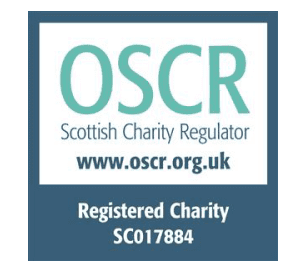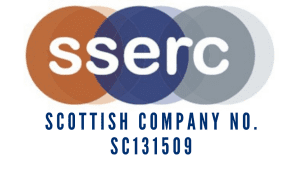Welcome to the National 4 Chemistry page.
 We have made a start uploading resources for experimental work that could help to support teaching of the course. Don’t worry there’s quite a bit more to come.
We have made a start uploading resources for experimental work that could help to support teaching of the course. Don’t worry there’s quite a bit more to come.
The resources are accessed from the unit pages which you can get to from the links below.
Alternatively you can use the search facility or you can find a list of all the resources here.
The key areas covered in this Unit are:
fuels — formation and extraction processes for crude oil; the use of fuels and their environmental impact on the carbon cycle, and alternative energy sources including biomass
Dynamite soap (Demo) – exploding bubbles of hydrogen and oxygen produced by electrolysis of water.
Methane bubbles (Demo) – Preparing and igniting bubbles of methane.
Piezo rockets (Demo) – preparing and firing mini pipette rockets containing hydrogen (or possibly another flammable gas)
Whoosh bottle (Demo) – Ignition of alcohol vapour in a 15l water bottle to produce a spectacular ‘whoosh’.
Dye Sensitised Solar Cells: An activity to show generation of electricity from plant pigments.
hydrocarbons — fractional distillation and cracking, straight chained alkanes (C1–C8), alkenes (C2–C8), their physical, chemical properties, general formulae, structural formulae and uses; unsaturated and saturated hydrocarbons.
Distillation of Crude Oil – A teacher demonstration to show the fractional distillation of a ‘Crude Oil’ mixture.
Cracking – microscale – A microscale version of the cracking experiment producing smaller hydrocarbons from paraffin oil
everyday consumer products — alcoholic drinks: sources and production, units in drinks and health issues, analysis of carbohydrates, Benedict’s and iodine solutions; solubility of carbohydrates; competing demands for carbohydrates as food or fuel
Screaming Jelly Baby – The classic demonstration to show the energy that is contained in sugars.
plants to products — practical-based activity on products derived from plants which have enhanced everyday life
Shampoo: Activity to make shampoo, involving steam distillation to extract natural essences from plants
Lip Balm: Activities researching and then making lip balms using many plant-based products.
Flash Chromatography; can be used to separate samples of food dyes (pure samples or extracted from sweets) or plant pigments.
Vitamin C Drops: Ascorbic acid is added to many doods as a preservative. This easy practical estimates the content in a variety of fruit juices.
Biodiesel: An investigation into the production and testing of Biodiesel from vegetable oil
The key areas covered in this Unit are:
metals and alloys — reactivity series, reactions of metals, corrosion, physical and chemical protection of metals, electrochemical series and electrochemical cells, voltage and electroplating, extraction of metals displacement reactions, composition, uses and physical properties of alloys
Coca-cola powered clock (Demo) – Different metals to generate electricity using coke as the electrolyte (could be done as a class experiment)
Electroplating faces (Demo) – nickel plating of a copper coin.
Growing Silver Trees (Demo) – Displacement reactions producing dendritic crystals of silver.
Turning copper coins into silver and gold (Demo) – Zinc plating a copper coin with sodium zincate and then heating it to make brass.
Zinc electroplating – microscale – a small scale version of the experiment above.
Salt and Battery: Use of fruit juices and different metal electrodes to generate an electric current.
Copper Etching – Use of a displacement reaction to etch a zinc plate and use it for printing
Plastic Fantastic – Synthesis and testing of an electrically conductive plastic – polypyrrole.
materials — polymers, monomers, name of polymers, thermosoftening and thermosetting plastics, properties, uses and combustion of plastics, biodegradable plastics; advantages and disadvantages of natural versus synthetic polymers, ceramic materials properties and uses; development of new materials unique properties; reuse and recycle materials
Dehydrated snow (Demo) – Absorption of water by sodium polyacrylate hydrogel.
Disappearing Water (Demo) – Absorption of water by sodium polyacrylate hydrogel
Gloopy and gooey (Demo) – two related experiments – Gaviscon in copper sulphate solution and PVA/Borax – both cross-linking polymers (could be done as class experiments)
Smart Materials: Some short activities involving commercially available smart chemical materials.
Polymer Slime: Making slime from borax and PVA glue – and looking at the properties as the composition varies.
fertilisers — plant nutrients and elements, natural and synthetic fertiliser
nuclear chemistry — formation of elements and background radiation
chemical analysis — qualitative analysis of the environment including pH, and flame testing
Flame colours (Demo) – using atomiser bottles to carry out flame tests (can be done as a class experiment)
pH of the Planet – A simple experiment using two indicators with overlapping ranges to determine the pH of environmental water samples.
The key areas covered in this Unit are:
rates of reaction — following the rate of a reaction
Colourless orange or blue (Demo) – A demonstration version of the Briggs-Rauscher reaction – as used in antioxidants workshop.
Rhubarb, Rhubarb, Rhubarb (Demo) – Stirriing a beaker of dilute potassium manganate VII, the solution goes clear.
Antioxidants – This is a range of investigations based around the Briggs-Rauscher oscillating reaction to look at antioxidant levels in fruits and teas (though the method can be adapted for any source of antioxidants).
Rhubarb Rhubarb – An investigation following on from the demo above, Using rhubarb decolourising permanganate to follow the rate of reaction, looking at concentration and surface area (and perhaps temparature)
Thiosulphate acid reaction – microscale – A small scale version of the classic investigation into rates of reaction. Use of small scale and a neutralising bach reduces the production of toxic SO2
atomic structure and bonding related to properties of materials — basic atomic structure including electron arrangement; covalent bonding as electron sharing and ionic bonding of electron transfer; physical properties of substances linked to bonding, chemical formulae of two element compounds; symbol equations from word equations
Iron-sulphur – microscale – a small scale reaction between iron and sulphur followed by an examination of the properties of the sulphides formed.
Formula of magnesium oxide – microscale – Using a bottle-top crucible for a small scale experiment into the mass changes involved in this reaction.
Aluminium – Iodine reaction – (Demonstration). Classic demonstration that leads to clouds of purple iodine vapour as well as the formation of aluminium iodide.
energy changes of chemical reactions — recognising and uses of exothermic and endothermic reactions
Cool Experiment (Demo) – The classic endothermic reaction between barium hydroxide and ammonium thiocyanate.
Genie in a Bottle (Demo) – Exothermic decomposition of hydrogen peroxide by potassium iodide.
Hot Stuff (Demo) – The spontaneous exothermic reaction between propan-1,2,3-triol (glycerol) and potassium manganate VII
Light Sticks (Demo) – Using light sticks to show how temperature affects the rate of reaction (this can be done as a class experiment instead of a demonstration).
Methane Bags (Demo) – Burning bags with different ratios of methane:oxygen in them.
Methane Bubbles (Demo) – Preparing and igniting bubbles of methane.
Methane Tin (Demo) – Using old coffee tin with methane flame from hole in top. Air comes in and eventually you get the right ratio for an explosion.
Non-Burning £5 note (Demo) – Burn a note in a ethanol/water mixture. The water keeps it cool enough not to burn.
When a fossil fuel burns (Demo) – Classic demonstration, collection of water and carbon dioxide when a Bunsen burns
Whoosh bottle (Demo) – Ignition of alcohol vapour in a 15l water bottle to produce a spectacular ‘whoosh’.
Biodiesel – A range of investigations based around the production and testing of Biodiesel from vegetable oil.
acids and bases — the effect of soluble oxides on the pH of water; soluble oxides and their environmental impact of non-metal oxide; uses of acids in food and drink and their impact on health; selection of chemicals for salt formation
Acid Rain in the Classroom – A simple and safe way to show howf CO2, NO2 and SO2 can create acid rain.
Colourful Flowers (Demo) – Make paper ‘flowers’ soaked in different buffer solutions. Then spray indicator on and you get different colour flowers.
Law of similar shapes (Demo) – A series of simple ‘trick’ reactions involving acids, bases and phenolphthalein.
Rainbow reaction (Demo) – Form a rainbow of colours to illustrate pH scale with HCl and sodium carbonate along the length of a burette
Spell casting (Demo) – Clear liquid poured into beakers with tiny amounts of acids/bases in – fails to change colour until the last one – phenolphthalein indicator
Vinegar Cheats: Using a simple titration (with pipettes) to find out which samples of vinegar have been watered down.
Here you will find all the old Prescribed Practical Activities (PPAs) for Intermediate 1 and 2. They have all been updated with new layouts and with brand new risk assessments for each one.
Intermediate 1
Int 1 PPA1-1 – Effect of Temperature Changes on Dissolving Speed
Int 1 PPA1-2 – Effect of Concentration Changes on Reaction Speed
Int 1 PPA1-3 – Testing the pH of Solutions
Int 1 PPA2-1 – Electrical Conductivity
Int 1 PPA2-2 – Reactions of Metals with Acid
Int 1 PPA2-3 – Factors which affect Lathering
Int 1 PPA3-2 – Burning Carbohydrates
Int 1 PPA3-3 – Testing for Starch and Sugars in Food
Intermediate 2
Int 2 PPA1-1 – Effect of Concentration on Reaction Rate
Int 2 PPA1-2 – Effect of Temperature on Reaction Rate
Int 2 PPA2-1 – Testing for Unsaturation
Int 2 PPA2-3 – Hydrolysis of Starch
Int 2 PPA3-1 – Preparation of a Salt



